Lowdown: Finding The Audience Sweet Spot
Candour about challenges, success stories, artists standing up for their communities, international triumph and grassroot returns in Aotearoa.
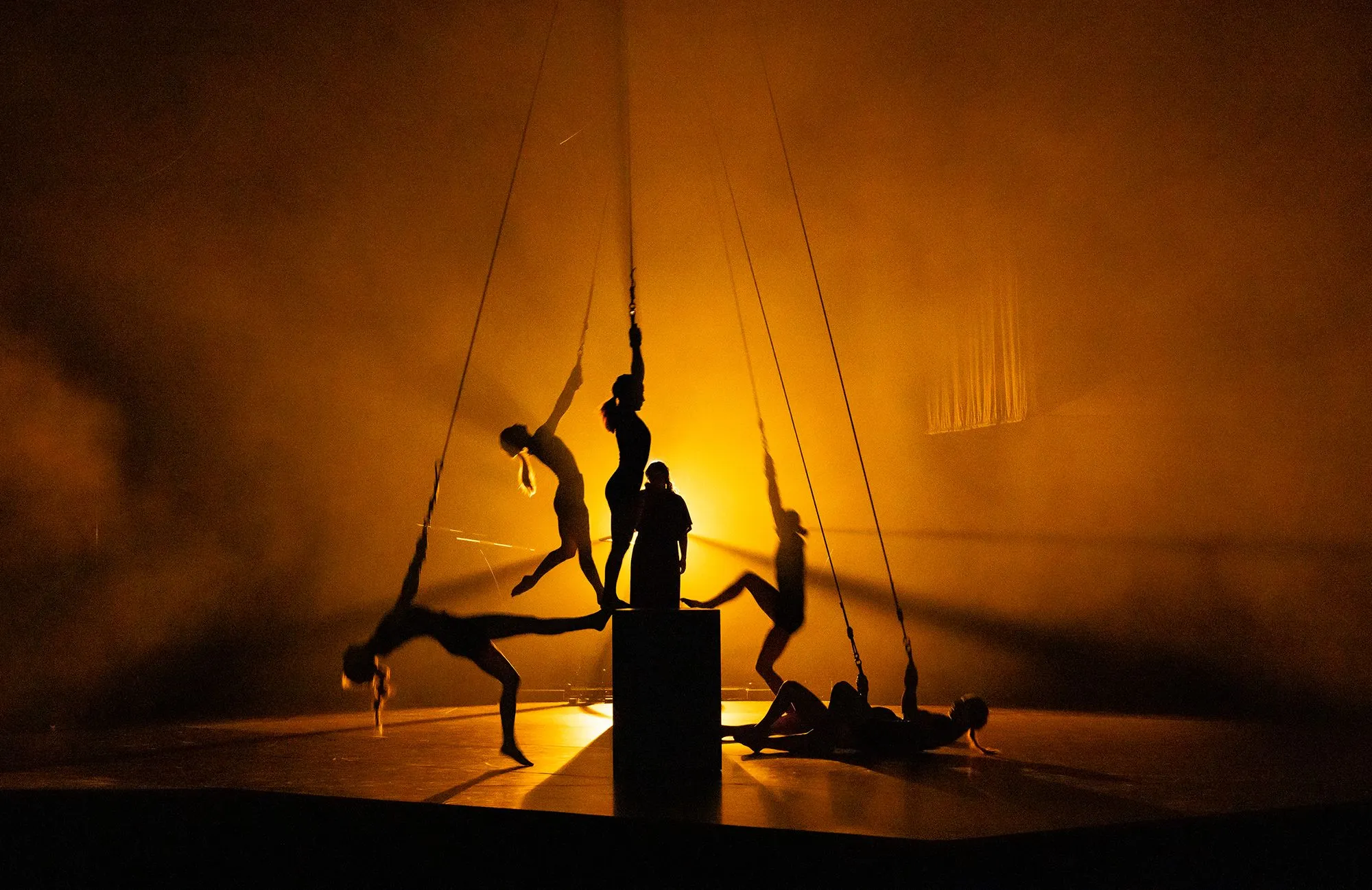
Getting bums on seats is the goal of any live production organisation - and there's no question it's proved challenging for many.
But there's no backing down from Auckland Theatre Company (ATC) - announcing their slate for its 2025 season this week.
At first glance, it's a collective stacked with works written by or inspired by some of the biggest names in the game; Agatha Christie, Mary Shelley and William Shakespeare.
But there's far more to it than that. Yes, there are familiar names attached to the plays that may appeal to a broader group of potential theatre-goers but there is a strong backing of award-winning New Zealand writers amongst it - Witi Ihimeara, Sir Roger Hall, Jess Sayer and Ahi Karunaharan.
Two world premieres, an Auckland premiere, and a fresh, bilingual approach to an Aotearoa classic, with recognised directing talent Shane Bosher (Murder on the Orient Express), Oliver Driver (MARY: The Birth of Frankenstein), Benjamin Kilby-Henson (Romeo and Juliet), Alison Quigan (End of Summer Time), Katie Wolfe (TIRI: TE ARAROA WOMAN FAR WALKING), and Jane Yonge (a mixtape for maladies) taking the collective helms. There's also the usual dose of top performers named including Rima Te Wiata, Andrew Grainger and a double dose of freshly minted Arts Laureate Miriama McDowell (both Romeo and Juliet and TIRI: TE ARAROA WOMAN FAR WALKING).
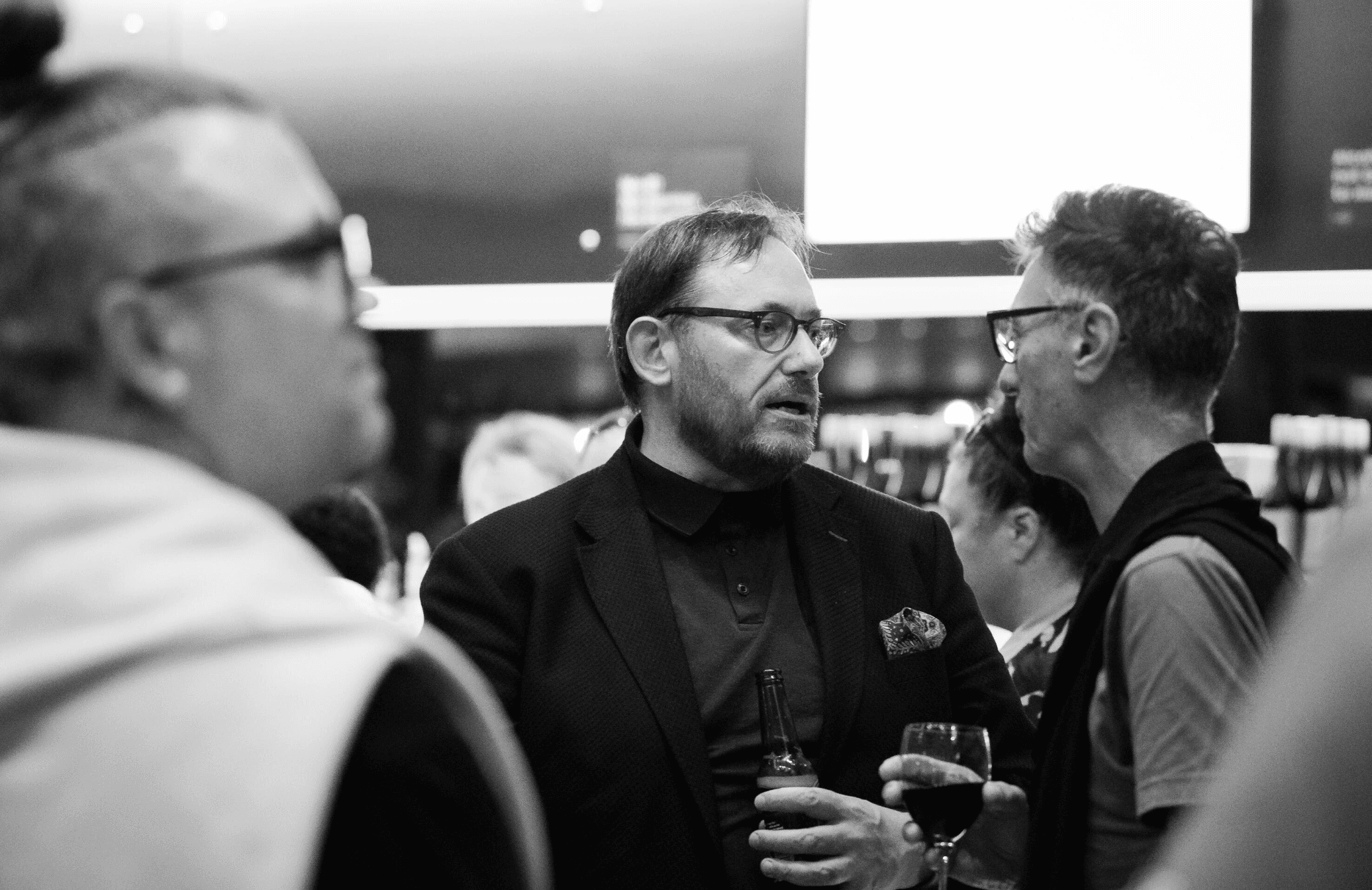
ATC Artistic Director and CEO Jonathan Bielski was open and honest when approached by The Lowdown about the process that went into putting together next year's season - what informed ATC's decisions and the current realities the organisation faces.
"After a banner year in 2023, 2024 has been a very challenging year at the box office for ATC. It has been a year adversely affected by the depressed economic conditions, which we have seen at the box office and in the venue hire business at ASB Waterfront Theatre. Our season was ambitious and not everything met our box office expectations.
"I don’t think we can draw trends from current happenings. Box office performance is cyclical, some years are better than others and it does not mean the audience is changing. In 2024 we had a big crowd-pleasing hit like Red, White & Brass by Leki Jackson-Bourke while other work has not met our sales expectation and as always, there will be myriad factors at play including our own decision-making.
"If there is one overarching objective, it is for us to make really great theatre at an ambitious scale, to back directors and their teams to make use of the scale ATC offers. Sure, our approach to 2025 is informed by our current financial context but it remains true to a desire for our Company to connect with many storytellers and communities.
"After such a difficult year, we are of course focused on a programme that will perform well at the box office, but also the desire to produce outstanding productions. With three brand new New Zealand works in a mixtape for maladies, Mary: The Birth of Frankenstein and both a revised Woman Far Walking and Tiri: Te Araroa, a new version in te reo Māori, it is a year dominated by new work."
That final work mentioned in particular is a sign of where theatre is heading. It's a groundbreaking step for ATC - a main-stage play to be presented in te reo Māori for the first time in the company's history. TIRI: TE ARAROA WOMAN FAR WALKING will be performed in two parts, English and te reo Māori, with Wolfe directing and Maioha Allen making his playwright debut to reimagine Ihimaera’s classic.
While that will close the season, Arts Laureate Karunaharan's a mixtape for maladies will kick things off in March in its world premiere, after originally being billed as part of the 2024 offerings for a November release.
DAT's the way
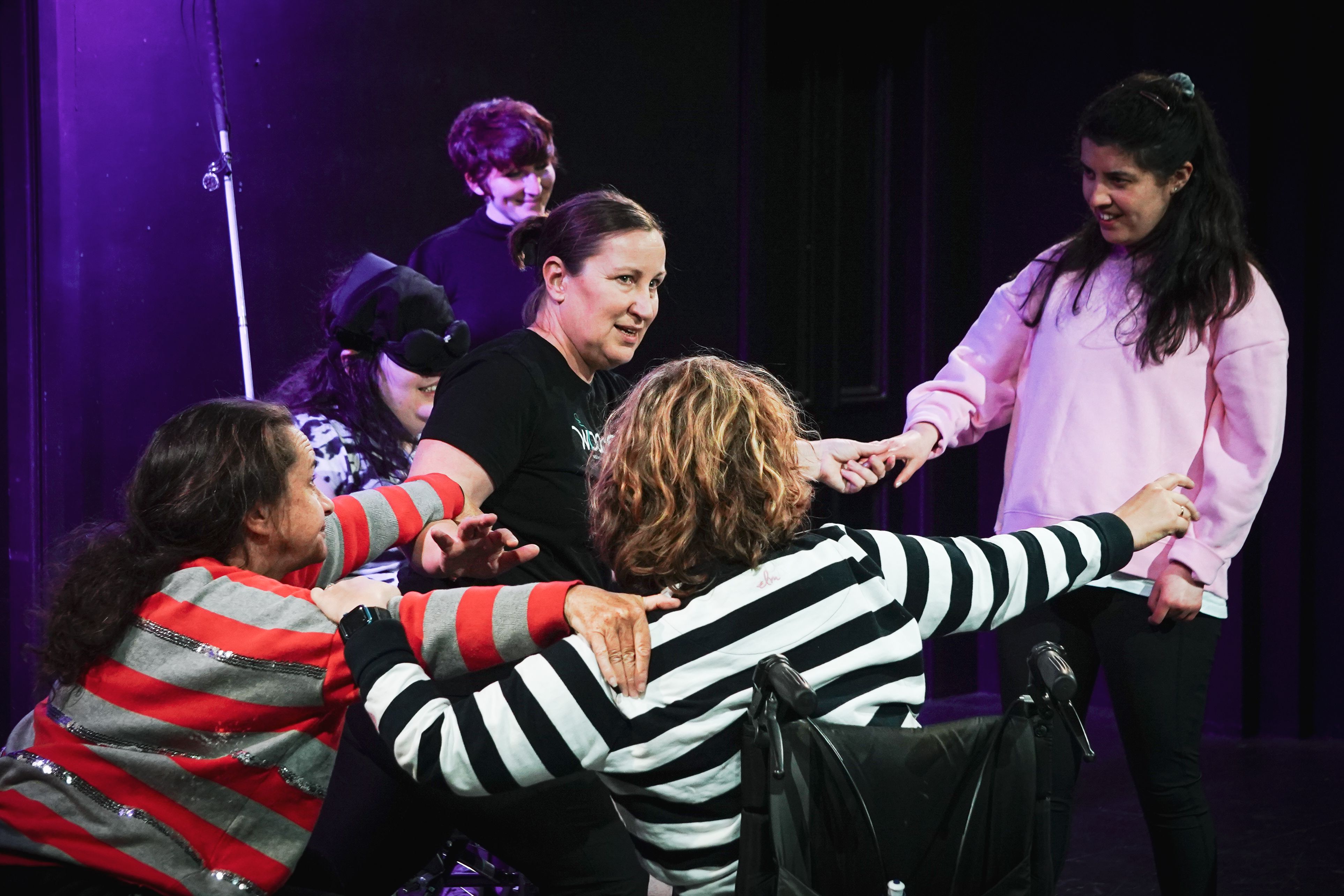
The power of performance and the impact it can have on a community is something that should never be lost in conversation.
The continued growth and success of the Disabled Artists Theatre Festival (DAT Fest) is a prime example of filling a gap in the sectors offerings and the need to make sure its audience's voice is heard - at a time where its needed most.
Directors and celebrated disabled artists Creatif Kate and Susan Williams are entering the third year of the festival with a two-week programme (2-17 November) at Te Auaha in Wellington. In the space of those three years, DAT Fest has gone from winning a Wellington Theatre Award for social change in their inaugural year, to recieving CreativeNZ funding and a fully staffed D/deaf, disabled, and neurodiverse (DDN) team of 12 putting it together - with big plans for the future.
“I’m turning the festival into a charitable trust with the intention of making DAT Fest a year-round support network for DDN artists. I want people to spend the year doing workshops, preparing acts, and meeting other DDN artists to create magical things, and being truly ready to showcase what they’ve been working on at the Festival.”
It's the type of positivity, inclusion, access and support that this audience needs right now. The current political landscape in the disability sector has made both Co-Directors feel the need to stand up for their community more than ever.
Williams states “Our fledgling ministry (Whaikaha - Ministry of Disabled People) has been gutted, funding curtailed with no warning, our community is living in daily fear, either trying to cope with these soulless, unnecessary cuts, or desperately hoping that the other services we rely on to live won’t be next. And it isn’t only disabled people.
"This government’s attitudes towards minorities, and marginalized people are unacceptable. Set against a global backdrop of hate, bigotry, and human misery. What gives me hope is those out there working, campaigning, advocating, carrying on, in whatever way they can, to try to mitigate the worst of the damage, and hold this government to account."
Kate adds “The total disregard for and degradation of people who can’t make the government richer is abhorrent. It smacks of totalitarianism and brutality. Enforced poverty should not be the norm for DDN people who desire and deserve to live rich (not monetarily) and full lives.”
The tautoko of many within the creative community does not go unnoticed - Williams acknowledging those who are authentically helping to bring about change in the sector.
“It’s been brilliant. So many people want to do more, make their own practices more accessible, and reach disabled audiences. It’s great to have enthusiastic people help out and know that they will take those skills into their other work. I have just been co-teaching some of our community audio-describers, and it’s great to introduce an aspect of performing arts people may not have come across before or have always wanted to learn more about.”
Capital result
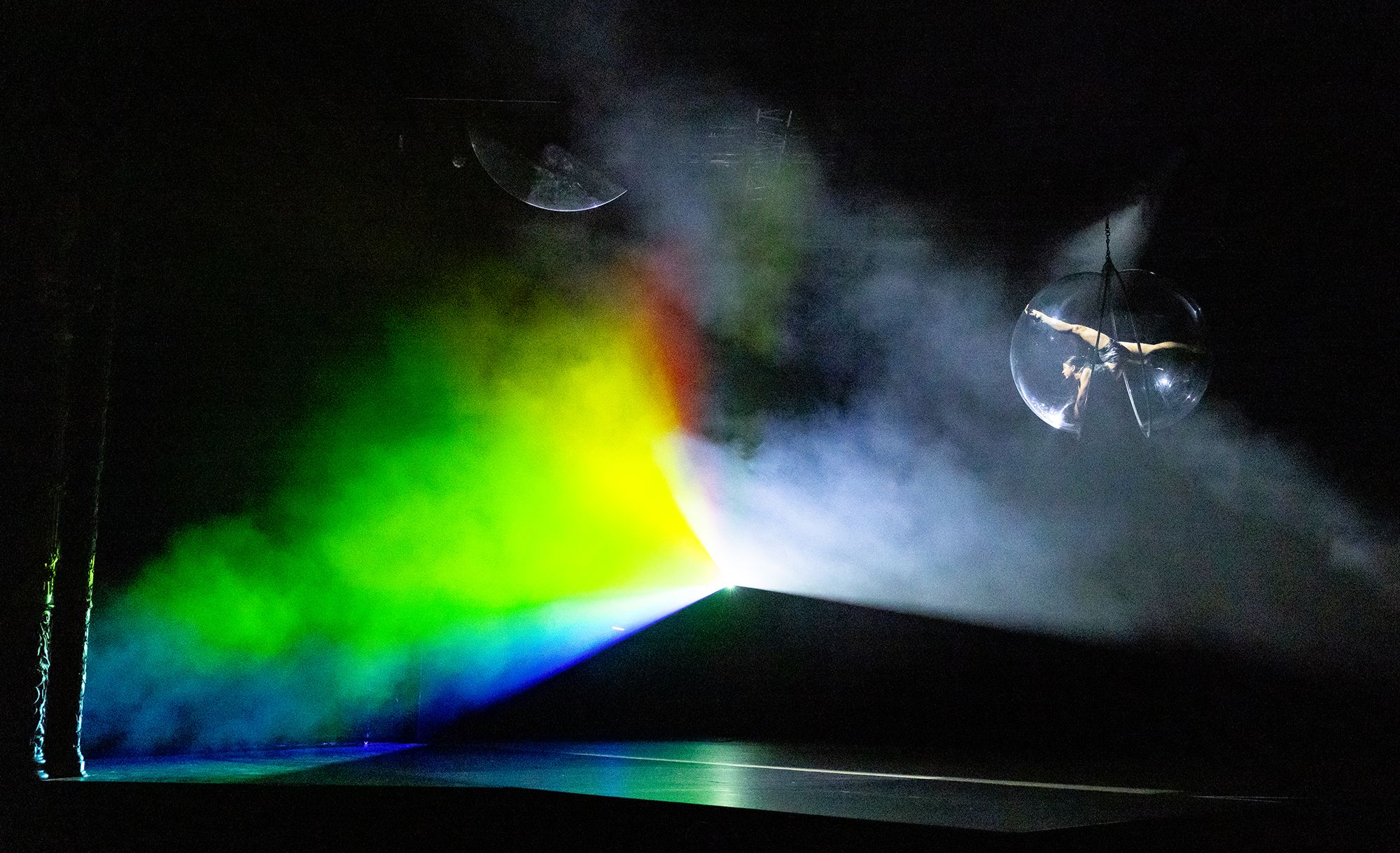
This year's Aotearoa New Zealand Festival of the Arts was touted as a success when it finished up - now they have the stats to prove it.
Organisers Tāwhiri has released the figures for the 2024 Festival, with 68,000 tickets issued with an overall attendance of 470,000 (including to free events) taking in the mahi of over 500 artists - with numbers to further prove the arts can be a great tourism driver.
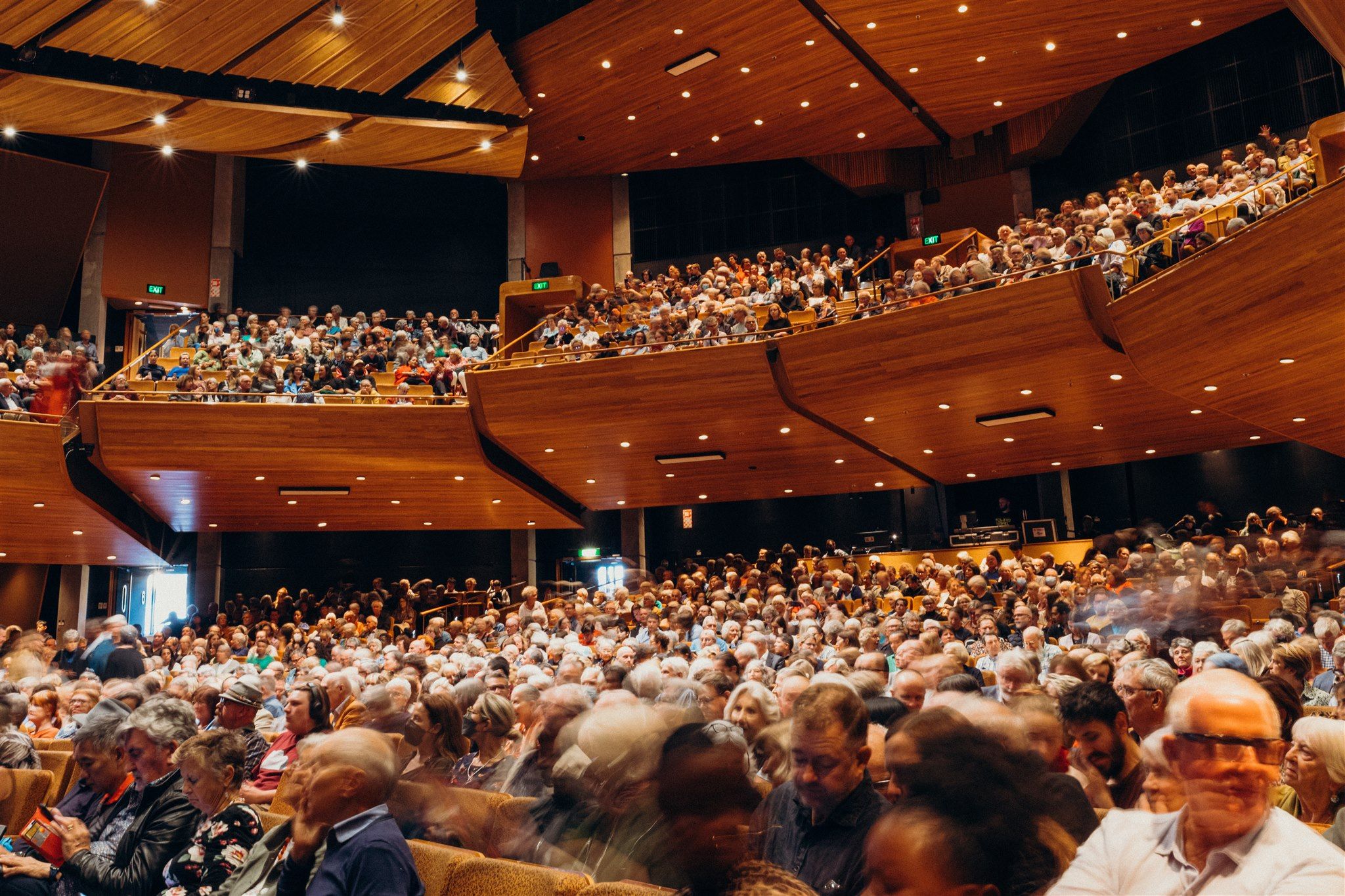
34,000 visitors came from outside Wellington, spending between $200-300 a day, energising not only the creative sector but hospitality and retail as well.
Beyond the numbers, it’s a powerful driver of community pride—a survey found 88% of Wellingtonians feel the festival increases their pride in the city, and 97% say it makes Wellington a more enjoyable place to live.
Survey data shows the major drivers to attend were the international and Aotearoa New Zealand programme, a love for live events and wanting to experience something new.
At a time where holding ground is proving difficult for many events, this is news worthy of celebrating.
Executive Director of Tāwhiri, producers of the Festival, Angela Green says, “We are proud to contribute to the vitality of Te Whanganui-a-Tara Wellington in the summer months, and the uniqueness of our city is such an asset: venues are within walking distance, locals are passionate about the arts and artists are making great work. "Watching audiences spill out of the theatres and seeing thousands of people captivated by Light Cycles’ lit environment, I was struck by how powerfully arts and culture connects us.”
The Light Cycles event in Wellington Botanic Garden alone captured the attention of over 31,000 people.
Hazel Rigler, Chief Executive Officer at Village Accommodation Group states, “Light Cycles was a remarkable example of how art can reinvigorate our city. The event attracted a wide audience, injecting much-needed vibrancy and substantially benefiting both our business and the wider hospitality sector. After the challenges of the post-pandemic period, it was heartening to see our city thrive through the power of creativity and shared experiences.”
NZ film a hit in Hawai'i
New Zealand's screen performing talent is being recognised once again at the Hawai‘i International Film Festival (HIFF).
Aotearoa talent has done well at HIFF over the years, with the 44th edition of the event being no different, as Pasifika voices from all across the globe recognised.
Josephine Stewart-Te Whiu's superb We Were Dangerous has claimed the $5,000 Pasifika Award for Best Feature Film - adding another accolade to one of this year's strongest NZ film offerings.
And a star of another 2024 stand out (Ka Whawhai Tonu; Struggle Without End), Temuera Morrison was presented the Leanne K. Ferrer Trailblazer Award - given to a cinema artist of Pacific Islander heritage who broadens the scope of Pacific Islander stories onto the world stage, producing award-winning work in independent and global cinema.
Event organisers Pacific Islanders in Communication highlight Morrison (Te Arawa, Ngāti Maniapoto, Ngāti Rarua) was selected he creates and participates in works that supports, advances, and develops Pacific Island media content and talent that results in a deeper understanding of Pacific Island history, culture, and contemporary challenges. He joins a list of New Zealanders to have collected the award, including regular cast-mate Cliff Curtis, Taika Waititi and Heperi Mita (on behalf of Merata Mita) and Kerry Warkia.
Puha and popcorn
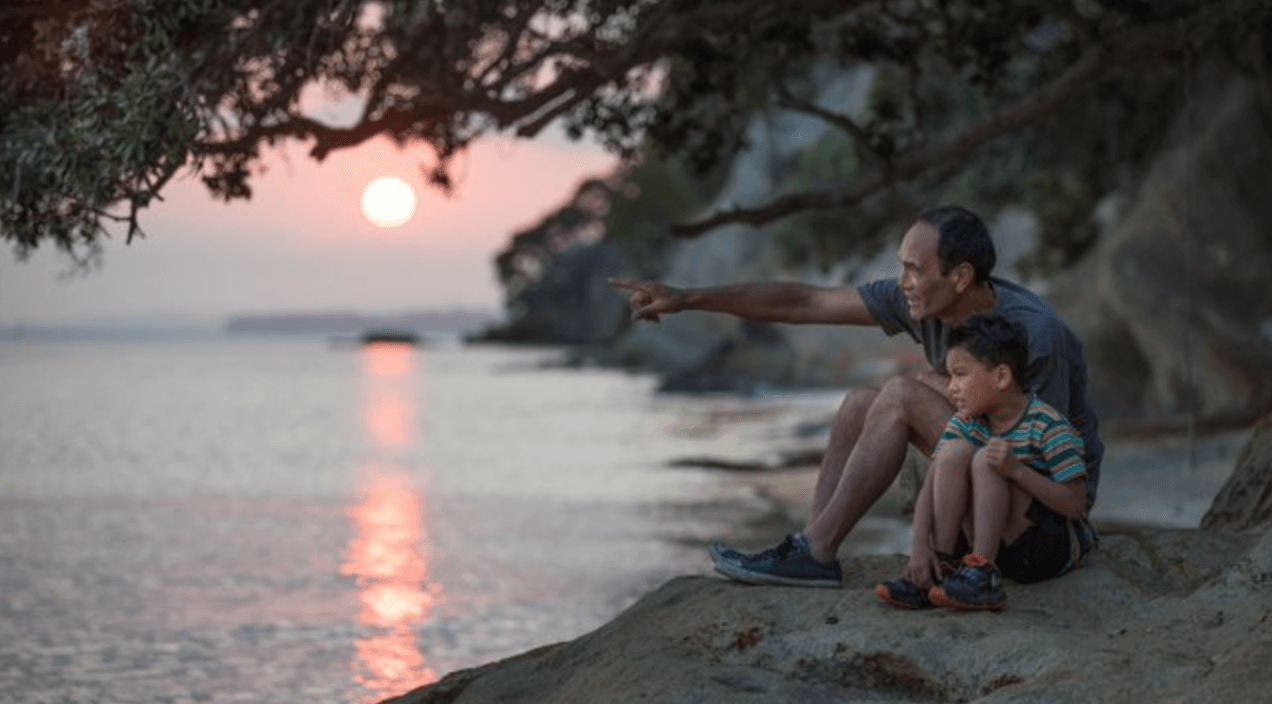
Māori filmmaking is also at the forefront on our shores this week too, with the return of the longest-running Indigenous film festival in Aotearoa -albeit in a scaled-back fashion.
After a two year hiatus, the Wairoa Māori Film Festival: Movies at the Marae comes back to life at Kahungunu Marae, Nūhaka for Labour weekend (25-27 October).
Festival Director Leo Koziol (Ngāti Kahungunu, Ngāti Rakaipaaka) is bringing the festival to his home village to mark the marae's 75th anniversary, with over 50 short films and five features over three days.
For a community that was so adversely affected by Cyclone Gabrielle - completely shut-off at one point - this is another much needed boost. When the Wairoa Star newspaper shut down earlier this year, Koziol questioned whether the Festival would be able to return, after watching local newspaper the Wairoa Star fold earlier this year.
"When an institution over a hundred years old disappears in a day, I thought how even though the film festival has been here for twenty of those years, if a newspaper can disappear so can a film festival."
But just as the Star was revived after being purchased by Tātau Tātau o Te Wairoa, the festival is battling on as well, hoping to raise funds (entry by koha) for the marae's whakairo restoration. Gone are the awards this year, with a focus on "putting on a 'puha-and-popcorn' weekend of Māori films for our community, as well as inviting all of our old film festival friends back to watch movies in the marae."
Binney Fellow a big boost
An $80,000 injection of support for Dr Rachel Buchanan - named the The Judith Binney Fellow for 2025.
Buchanan (Taranaki iwi, Te Ātiawa) is a member of Te Aro Pā Poets collective and Te Pouhere Kōrero Māori Historians Network. A long-term resident in Naarm/Melbourne, Rachel has worked as a journalist, an academic and a curator and is an established awardwinning author. The Fellowship grant will support the research, writing and publication of an innovative body of work linked to the concept of manuhiri (visitors) in Aotearoa and Australia.
Buchanan states “Receiving the Judith Binney Fellowship is an honour and a great vote of confidence in myself and the wider whānau, including the many talented uri of Taranaki who have guided my work. I am thrilled to accept it and I’m looking forward to being able to devote myself fully to research and writing next year.”
It's not the first time Buchanan has felt the aroha from the Trust - A Judith Binney Writing Award in 2020 supported her recent award-winning book, Te Motunui Epa, a co-winner of both the 2023 Ernest Scott Prize and the W. H. Oliver Prize, as well as being a finalist in the Māori Literature Trust’s inaugural Keri Hulme Award and the Ockham New Zealand Book Awards.
That will be a good omen for the three 2025 recipients, who each receive $25,000 - teacher, dancer, historian, writer, and arts advocate Dr. Marianne Schultz; independent researcher (with a legal background and experience in Treaty claim settlements) Dr. Sandra Thomas; and transgender Wellington based historian and trustee of Kawe Mahara Queer Archives Aotearoa, Will Hansen.
Blown away
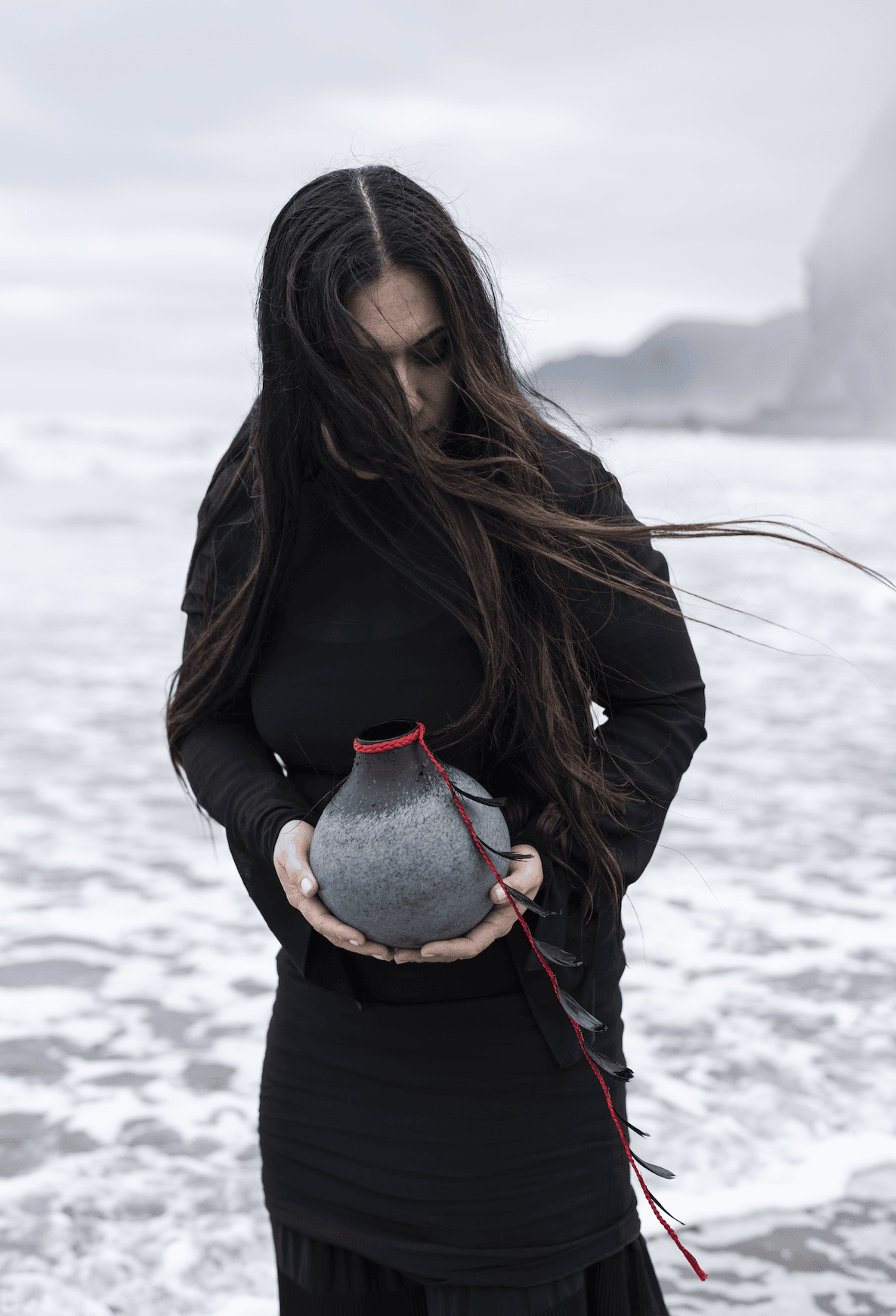
International success for Te Rongo Kirkwood - who has become the first New Zealand artist to receive the prestigious Rakow Commission, given out by the Corning Museum of Glass (CMoG) in New York.
It's an incredible accolade for mixed media artist Kirkwood ((Wai o hua, Ngai Tai, Kawerau a Maki) - which will see her mahi joins the Museum’s permanent collection when it is unveiled on 14 November.
“Receiving the Rakow Commission is a tremendous honour,” Kirkwood states. “It’s a unique opportunity to explore and expand the possibilities of the use of glass in contemporary art. Recently, I've been using film to engage more directly with my work, I want to express nuance and connect on a deeper level."
The seer, the seen, the seeing is a multi-dimensional installation, with Kirkwood creating a kākahu (cloak) made of glass and woven fibers, alongside a Puru hau (sacred ritual vessel) in blown glass. These two works are central symbolism to a film featuring Kirkwood and her father, set against the backdrop of their ancestral lands at Piha beach.
CMoG will bring together the film and the actual work - with the red and black kākahu to be suspended in front of a large video screen and above Piha's famous black sand.
“I find it difficult to express my internal experience through words, so I turn to art to explore the layers of complexity of being alive, seeing, and perceiving,” Kirkwood explains. "I love how each viewer resonates with art in their own way, bringing their unique lens of perceptions and life experiences.”
The Rakow Commission has been awarded annually since 1986 and is considered one of the most prestigious awards for artists working in glass. Its aim is to support the creation of a new work by encouraging artists to venture into new areas that they would have been unable to explore because of financial limitations, worth around $42,000.
“I’ve been keeping an eye on the profound work Kirkwood has been applying to glass for some years, I’m so pleased to see her push her practice into new possibilities for this year’s Rakow Commission,” explains Tami Landis, CMOG’s Curator of Postwar and Contemporary Glass. “This year’s commission will be a profound visual and conceptual moment for people from all over the world as it comments on family and inherited knowledge, past and present. Her work speaks to our current time and place, while speaking succinctly about her personal past and future.”
Raging success

A New Zealand indie artist has been recognised for her mahi with a message across the Tasman.
Raging Flowers (AKA Amy Shuang Wang) won the Music category in Brisbane's 2024 Out From The Mist competition, centred around using the arts to showcase the challenges of mental illness and promote the hope of recovery.
Raging Flowers' unreleased song, Tissue Paper, was awarded with a cash prize of $13,250, mentoring sessions with one of the judges, as well as having her work exhibited at the Judith Wright Arts Centre in Brisbane for 18 days.
“This song was written during a time when you eat and sleep just to get to the next day to cry more, and you feel intensely sad for every object around you.” Raging Flowers shares. “I didn’t find it funny at all when I wrote the song. Looking back now, I can appreciate the humour in it.”
Tissue Paper was written during the 2024 APRA Aotearoa Mentorship Programme, where Wang was mentored by Steph Brown of LIPS fame, and will be performed when Raging Flowers appears at East Auckland's The Bridge next month, a show racing money to support MusicHelps.
Drake the drawcard
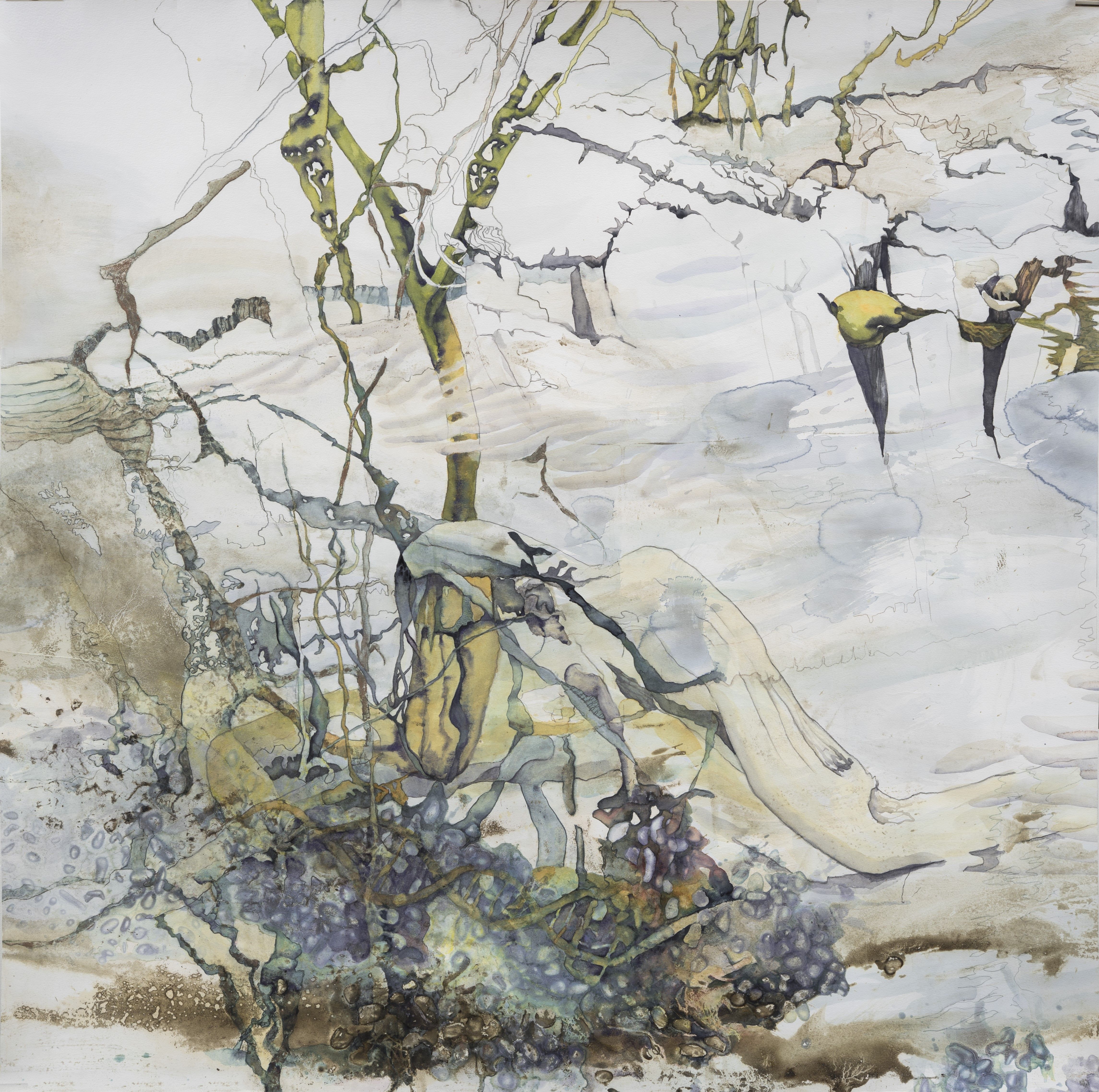
Auckland based artist Sonja Drake has stood out from a field of 141 entries to be crowned the winner of the $10,000 Waiheke Art Award.
Along with the 33 other finalists work, Drake's Drawn in Sediment is on display at Waiheke Community Art Gallery until 8 December, after the prizes were dished out at Saturday's gala event.
Explaining her work, Drake states "We shape the world in ways visible and invisible. There is a woundedness above and below the surface of the land. In the waterways, aquifers, the sea, and the bird, insect, plant, and animal life, human impact on our environment is not separate from us; it is part of us."
Also recoginsed were local artist Julia Holden, winning the Zinni Douglas Merit for her work Doppelgänger (Cobi tfj Bosch); Sara Langdon's O te Ngahere taking the Michael Evans Award for a figurative work, and Cat Fooks highlighted for her work Long Otto.